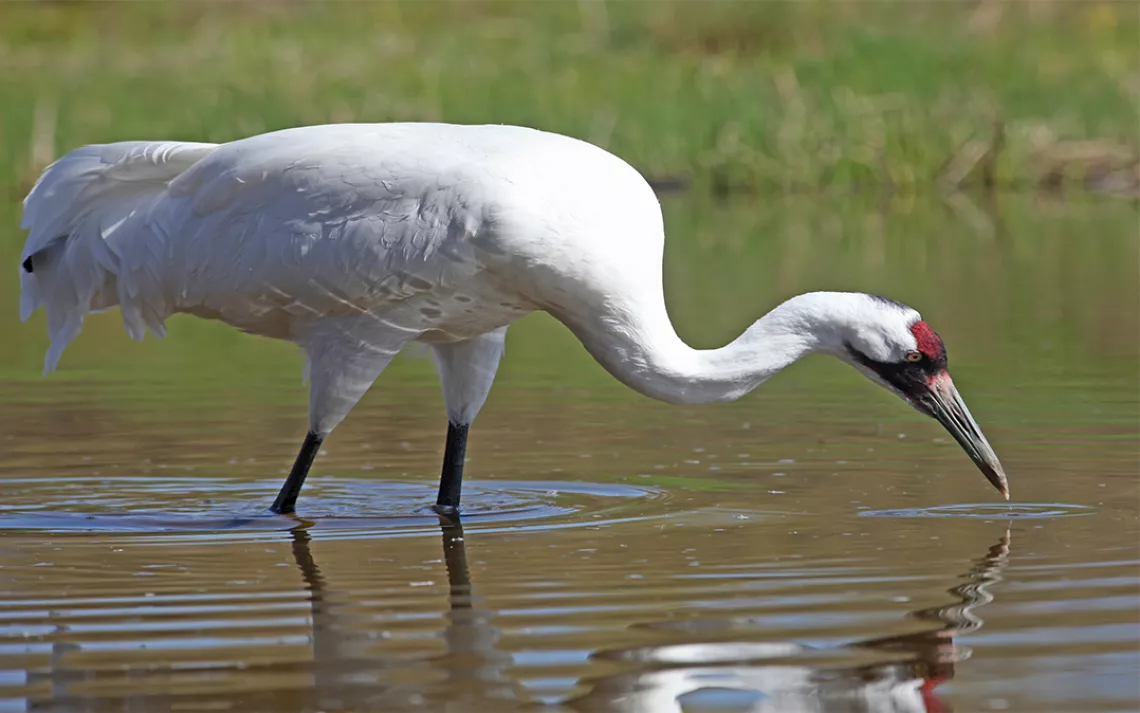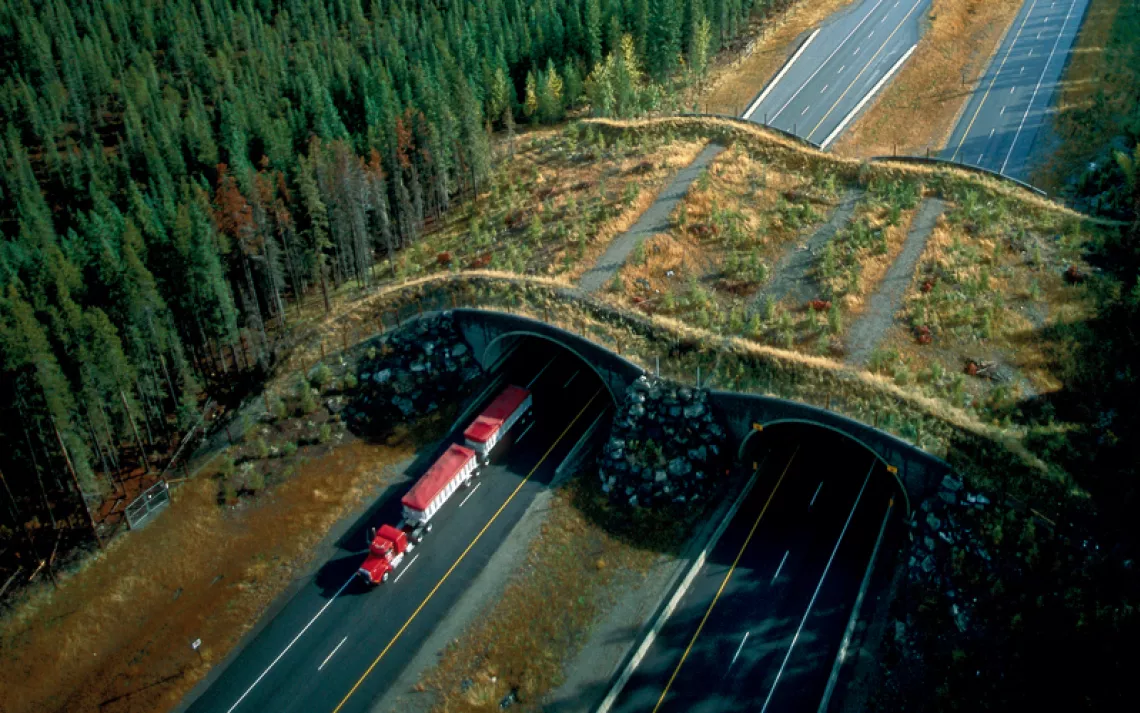It’s National Wildlife Refuge Week. Here’s Why You Should Celebrate.

Photo by Lynn_Bystrom/iStock.
In 1903, President Theodore Roosevelt designated Florida’s Pelican Island as the first wildlife refuge in the United States. Since then, the National Wildlife Refuge System has grown to include more than 560 refuges, 38 wetland management districts, and other protected areas encompassing 150 million acres of land and water from the Caribbean to the remote Pacific. There is at least one refuge in every state and territory, within an hour’s drive of most major metropolitan areas. Each year, tens of millions of people visit and enjoy these unique wildlife havens.
You might be wondering what distinguishes national wildlife refuges from other designated wilderness lands, such as national parks. While all natural spaces provide vital habitats for wildlife, national wildlife refuges were built specifically to create a network of open space for wild animals. They provide habitats for hundreds of species, including 380 endangered or threatened species. Many of our wildlife refuges have seen immense success in saving species that were once on the brink of extinction.
In honor of National Wildlife Refuge Week, we’re highlighting four of the best success stories.
Aransas National Wildlife Refuge, Texas: The Whooping Crane
One of the rarest birds in North America, the whooping crane is also the tallest, standing at five feet with a seven-foot wingspan. During the winter months, the cranes nest at the Aransas refuge on the coast, escaping the winter climate of their summer home in northwest Canada’s Wood Buffalo National Park. There are 300 or so birds that make up the only remaining population of whooping cranes that inhabit Aransas and Wood Buffalo. All of the whooping cranes alive today, both wild and captive, are descendants of the last 15 remaining cranes that were found wintering at the Aransas refuge in 1941. In 1986, officials at Aransas and Wood Buffalo created an International Whooping Crane Recovery Plan to coordinate their efforts to save the birds. According to the U.S. Fish and Wildlife Service, the goal of the recovery plan, which is still vitally important to the whooping crane’s survival, is to “protect the whooping crane and its habitat and allow the overall population to grow so that it is ecologically and genetically stable.”
Alligator River National Wildlife Refuge, North Carolina: The Red Wolf
The red wolf, native to North America, is one of the world’s most endangered wild canids. Like many other threatened and endangered species, it was once common in the United States, but the population had dwindled by the 1960s due to intensive predator control programs and loss of habitat. In 1973, red wolves were declared an endangered species, and in 1980 they were even declared extinct. Then the U.S. Fish and Wildlife Service found a small population of wolves in Texas and Louisiana near the Gulf of Mexico. In an effort to rebuild the population, they captured the wolves and started a breeding program. By 1987, there were enough offspring to reintroduce the species to the Alligator River National Wildlife Refuge in North Carolina. Since then, red wolf recovery has been a focal point of the refuge.
Today, approximately 50 to 75 red wolves roam their native habitats in northeastern North Carolina, and approximately 200 are part of the Red Wolf Species Survival Plan captive breeding program in sites across the United States.
Great Dismal Swamp National Wildlife Refuge, Virginia: Red-Cockaded Woodpecker
When Europeans were first settling North America, more than 1.5 million red-cockaded woodpeckers could be found in mature pine tree cavities across the Southeast, from New Jersey to Florida through east Texas. Today, wildlife experts estimate that about 1 percent of that number remain in the wild, and in a much smaller region. In 1970, the species was designated endangered as a result of the destruction of its mature pine forest habitat.
In October 2015, U.S. Fish and Wildlife officials released four pairs of red-cockaded woodpeckers in the Great Dismal Swamp National Wildlife Refuge in Suffolk, Virginia. They were the first of these endangered birds to inhabit the area since 1974, having been captured from the Carolina Sandhills National Wildlife Refuge in South Carolina, which is home to the largest concentration of these woodpeckers in the refuge system. Today, there are approximately 6,400 breeding pairs in the United States. Great Dismal Swamp Refuge manager Chris Lowie says, “This effort illustrates the role that our national wildlife refuges can play in the recovery of threatened and endangered species. It’s very rewarding to see our countless partners and volunteers bring this to life after many years of planning.”
Maine Coastal Islands National Wildlife Refuge, Maine: Roseate Tern
Arctic, common, and roseate tern populations were decimated in the Gulf of Maine in the late 1800s due to a combination of shooting and egging. Federal regulations banning these activities resulted in an increase in tern populations to at least 14,775 pairs by 1931. Unfortunately, gulls—who prey on tern eggs and chicks—also benefited from federal protection, and their numbers increased rapidly along Maine’s coast. The combination of expanding gull populations and habitat loss resulted in a new decline in the tern population for the next 50 years. By 1977, the Gulf of Maine tern population was down to an estimated 5,320 pairs.
Between 1972 and 1980, the Maine Coastal Islands National Wildlife Refuge Complex was established primarily for the protection of colonial nesting seabirds. The refuge focused particularly on restoring terns because their populations were so low. Tern restoration began in 1984 on Seal and Petit Manan Islands, which now support large colonies of common and arctic terns. Roseate terns, which are federally endangered, have returned to Petit Manan. More recent restorations have occurred on Pond, Metinic, Ship, and Eastern Brothers Islands. Establishing tern colonies on numerous refuge islands ensures that a singular catastrophic event, such as a disease, an oil spill, or a hurricane, will not wipe out a species.
 The Magazine of The Sierra Club
The Magazine of The Sierra Club







